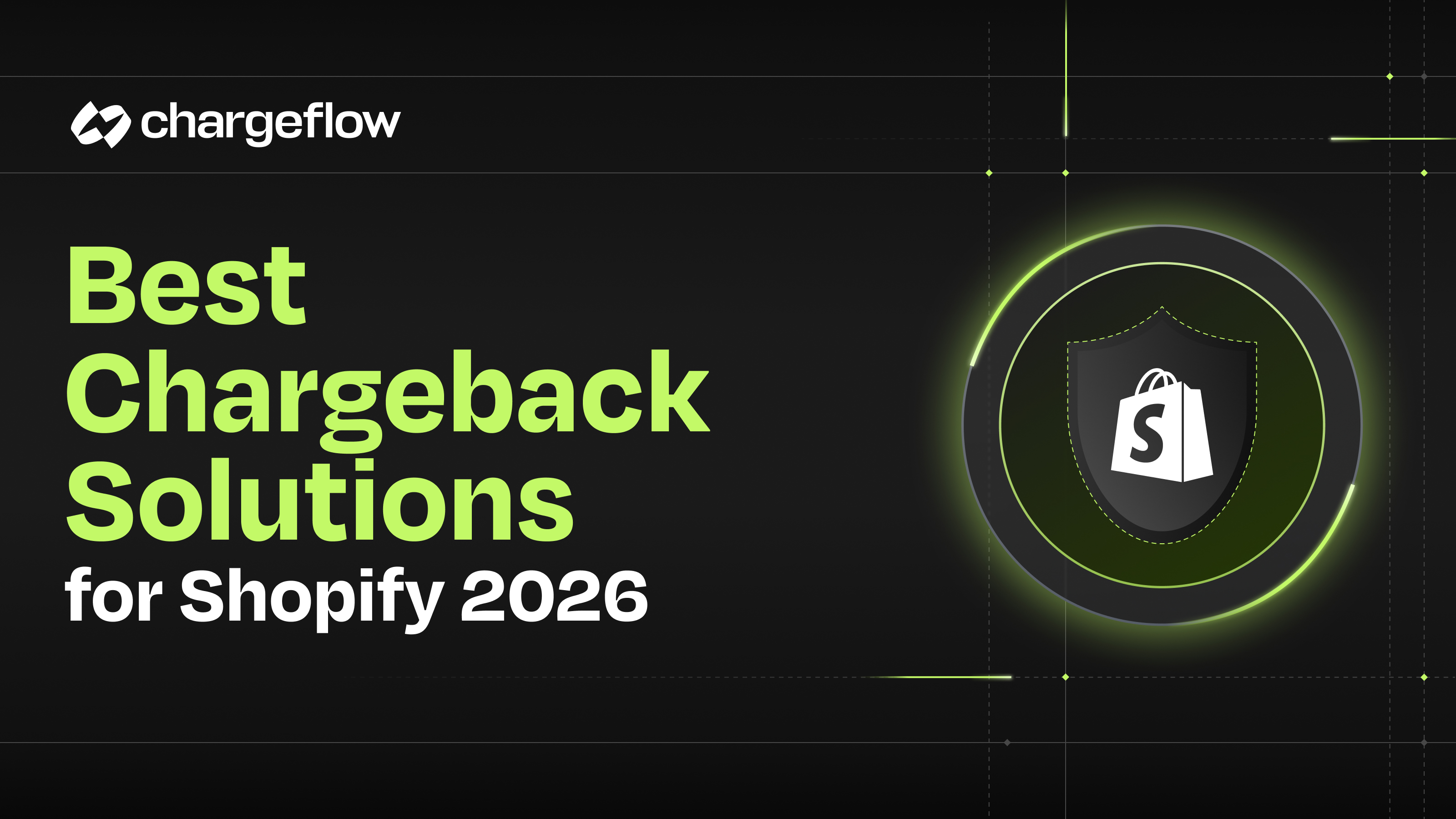Fighting Fraudulent Chargebacks: Insider Secrets No One Ever Talk About

Chargebacks?
No longer your problem.
Recover 4x more chargebacks and prevent up to 90% of incoming ones, powered by AI and a global network of 15,000 merchants.
In this article, we shall review crucial, easy-to-apply best practices to help you combat the different types of fraud online retailers commonly face.
Every e-commerce merchant knows the damaging impact that fraudulent chargebacks can have on a business. Such detrimental effects include merchandise and shipping cost loss, revenue loss, ancillary charges such as chargeback fees and high-risk processing fees, account reserve, reputational crisis, forced account reserve, and loss of payment processing rights.
If you don’t have adequate fraud prevention protocols for your online business, your company is in grave danger.
In this article, we shall review crucial, easy-to-apply best practices to help you combat the different types of fraud online retailers commonly face today. You will learn how chargebacks have become a friendly fraud, the impact fraudulent chargebacks have on your business, and how to mitigate chargebacks without hurting your business.
Before we take a deep dive into those themes, let's answer some fundamental questions.
What is a chargeback, and why do chargebacks happen?
Chargebacks are a consumer protection mechanism that allows a cardholder’s bank to reverse a transaction payment to the merchant.
Even though chargebacks ultimately mean payment reversal, chargebacks and refunds aren’t the same. In a chargeback scenario, when a cardholder has an issue with their order, they contact their bank to reverse funds instead of the merchant. More so, unlike refunds that happen between the cardholder and the merchant, chargebacks involve other parties such as banks, card networks, regulators, etc. Plus, each chargeback attracts heavy financial liabilities, which, in some cases, can be 3x the transaction value.
That said, there are several reasons that cardholder disputes occur, such as:
- The cardholder does not recognize the transaction - unauthorized transaction billed
- Product not as described or defective - order has a significant undisclosed impairment
- Order or service not delivered - transaction was paid for but undelivered
- Friendly fraud - cardholder intentionally files a dispute to get something for free
Review our blog for a detailed analysis of each of those contexts.
Key takeaway from this section: Chargebacks are consumer-centric, and merchants lose over $3 to every dollar of a transaction.

How do frequent chargebacks affect your business?
Some people write off chargebacks are a cost of doing business because of the time-consuming, arduous labor involved in disputing chargebacks. It’s a nightmare: estimates suggest that in 2020, individual chargeback counts ranged from 15 disputes a year to 84,431.
As soon as a cardholder files a chargeback, the cardholder’s bank will debit funds from the merchant’s account. The burden of proof is then on the merchant. You have to establish, beyond all reasonable doubt, that the chargeback is meritless and the deduction unwarranted. But not just that, each chargeback comes with a non-negotiable fee ranging from $15-$100, depending on your processor.
That’s for nominal cases of chargebacks. If you’re a high-risk merchant, that is, if you get excessive chargebacks, the damages are way more significant. We’ve written extensively about the actual cost of excessive chargebacks on your business, so we’ll share a summary in this passage.
First, excessive chargeback merchants pay higher fees. Also, their ability to process funds is often limited, and ultimately, the company's existence gets slimmer with each new dispute. No PSP wants to work with a high risk merchant.
With that in the note, you must keep track of your chargeback ratio barometer to ensure your business does not cross the acceptable risk exposure limit. Unfortunately, the metrics used for determining chargeback ratios can vary depending on your network, acquirer, nature of business, historical data, location, and so on. But generally speaking, you should ensure that your chargeback-to-transaction ratio stays below 1%.
Calculating your chargeback-to-transaction ratio
Every card network has a unique set of rules for chargeback assessments. However, as we hinted above, they have a specific chargeback threshold merchants should observe. They move any business that crosses such an established chargeback limit into a monitoring program as a way of forcing that vendor to work on their risk exposure.
Over at MasterCard, they calculate the chargeback ratio by determining the number of first chargebacks filed in the current month divided by the number of transactions made in the past month. For instance, 150 chargebacks in July divided by 15,000 transactions in June gives you a 100 basis point or a 1% chargeback-to-transaction ratio.
For Visa, chargeback ratios are determined by the number of chargebacks filed in the current month divided by the number of transactions made in the current month. For example, 150 chargebacks in July divided by 15,000 transactions in July gives you a 100 basis point or a 1% chargeback-to-transaction ratio.
Key takeaway from this section: Going beyond one chargeback per 100 successful transactions makes you an excessive chargeback merchant.

Are all chargebacks fraudulent? And how can you prevent fraudulent chargebacks?
Before we go into answering that question, let’s have a look at what constitutes fraud.
True e-commerce fraud occurs in the form of hostile account takeovers, identity theft, refund request, payment interception, among others. True fraud affects both the cardholder and the merchant.
To secure your store against fraud, you should always watch for potential fraud indicators, make your site PCI-DSS compliant, require CVV for each transaction, and authorize purchases with 3-D Secure.
So, are all chargebacks fraudulent? The answer is no.
But there's more to that. Industry analysis shows that 80% of all chargebacks are fraudulent. That type of actual cardholder initiated grift is popularly known as friendly fraud.
For example, a cardholder might file a fraudulent chargeback on an actual order in hopes of receiving a full refund and still retain ownership of the order since no law requires them to return the item. Another instance of friendly fraud is when a cardholder files a chargeback for convenience and not because they couldn’t reach a consensus with the merchant. And in fact, analysts say that 81% of cardholders have filed a chargeback out of convenience.
To stop fraudulent chargebacks from taking your business under requires proactive measures. Adding to the fraud mitigation tactics above, you should:
- Ensure your customer relationship is in top gear;
- Include tracking functionality to your shipments;
- Constantly update your product pages;
- And add user testimonials to your order page.
I have to also mention that you MUST fight every meritless chargeback. Don’t eat the loss for want of workable strategies. Know what works for each card network and follow industry best practices.
Here are some ideas:
- Know what you are fighting. Look beyond the chargeback reason code to ensure your efforts are not in futility. And the best way to get that detailed insight is to automate your chargeback with tools such as Chargeflow.
- Time is crucial. Be sure you have ample time to gather your documents, send your documentation that speaks to the dispute and follow through with the process.
- Keep track of evidence. Ensure you have a trail of ancillary order evidence such as computer logs, receipts, and notices where they can be easily accessed.
- Use your rebuttal letter wisely. Your rebuttal letter is your opportunity to address all the circumstances surrounding the order and tilt the case to your advantage.
Key takeaway from this section: Fraudulent chargebacks represent a growing business risk; use chargeback automation to prevent friendly fraud proactively.
In the final analysis, you should keep in mind that the chargeback mechanism isn’t destructive in itself. The problem is, unscrupulous buyers have used it to open a flood gate that makes it easy for consumers to commit fraud. You can either let them have a field day at your store. Or you can use proven tools like Chargeflow’s fully automated framework to safeguard your company. By the way, migrating to Chargefow is seamless with the 2-click integration, and you pay ONLY when cases are won in your favor.

Chargebacks?
No longer your problem.
Recover 4x more chargebacks and prevent up to 90% of incoming ones, powered by AI and a global network of 15,000 merchants.






























.png)








